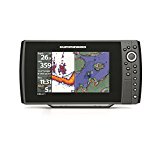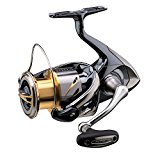Guadalupe Bass Night Fishing Facts and Information
Guadalupe Bass enjoys water-bound insects, crayfish, fatheads, golden shiners and gizzard shad.
There is not a lot of information online about the Guadalupe Bass, let alone on the narrow topic of night fishing. Some even go as far to say that they do not come out at night but it seems that everyone is an expert on the internet.
A resent study by a student in aquatic biology at the University of Texas conducted an eight month study on the behaviours of the Guadalupe Bass by following a sample population of the species.
One thing they were able to confirm is that the Guadalupe Bass does come out at night and is a night feeder. However, depending on the time of year, their level of activity varies from highly active and voracious feeders to rather lethargic during the winter and when they congregate at deeper levels.
Pure-Strain Guadalupe Bass
They were also able to provide some insight into the numbers of hybrid Guadalupe Bass. Hybrid Guadalupe have mixed linage, with a combination of their parents or ancestors being a Smallmouth Bass and the other being a Guadalupe Bass.
In some populations as many as 50 percent of the Guadalupe population is hybrid, which indicates a strong risk to the viability of the native strain. There are still native populations, but these too are at risk of hybridization.
One characteristic, other than markings, is that the smallmouth grows much larger than the Guadalupe Bass. The largest Guadalupe Bass caught weighed in at 3.69 pounds and was caught in 1983.
Fishing the Dark
The Guadalupe Bass can be found in riffles and pools rivers and streams in fast moving water. At night, they still prefer the same habitat, but tend to move around more. For Guadalupe Bass found in lakes and reservoirs, the Guadalupe Bass come out just after sunset, when their eyes have had enough time to get used to the dark.
Night time fishing requires a little more skill as it is darker, but also because the Guadalupe bass move around a lot more. During the day, they stick to their cover and avoid direct sunlight. With the sun set, they are free to roam around.
Just as it is hard for you to see at night, it is equally difficult for the bass to see. Recommended baits and lures should focus less on colour and more on flash and noise.
Use baits that create vibrations similar to those of wounded fish. Use spoons, spinners and crank baits to create flashes of light to attract their attention.
Food Preferences
The Guadalupe Bass enjoys water-bound insects, crayfish, fatheads, golden shiners and gizzard shad.
Any lure that replicates these baits will also prove successful including, but not limited to, plastic grubs, streamers and small crank baits: Madam Xs, Minnows, Woolly Buggers, Pencil Poppers, Jim Stewart’s Spin-N-Jim and the Buzz Bug.
Rod and Reel
Use a light rod and reel combination with a six pound test line. The Guadalupe Bass is a small fish. Using a heavy line and rod will make it difficult to detect a strike.
A good rod and reel combination is the Abu Garcia C3 Classic Baitcaster. At around US$140, it is not cheap, but it is constructed from strong materials, it is light and tough enough that it can be used to catch larger bass like the smallmouth and largemouth bass. The more cheaper Abu Garcia Ambassadeur is a good rod and reel combo for novice anglers and for catching small fish like the Guadalupe Bass.


